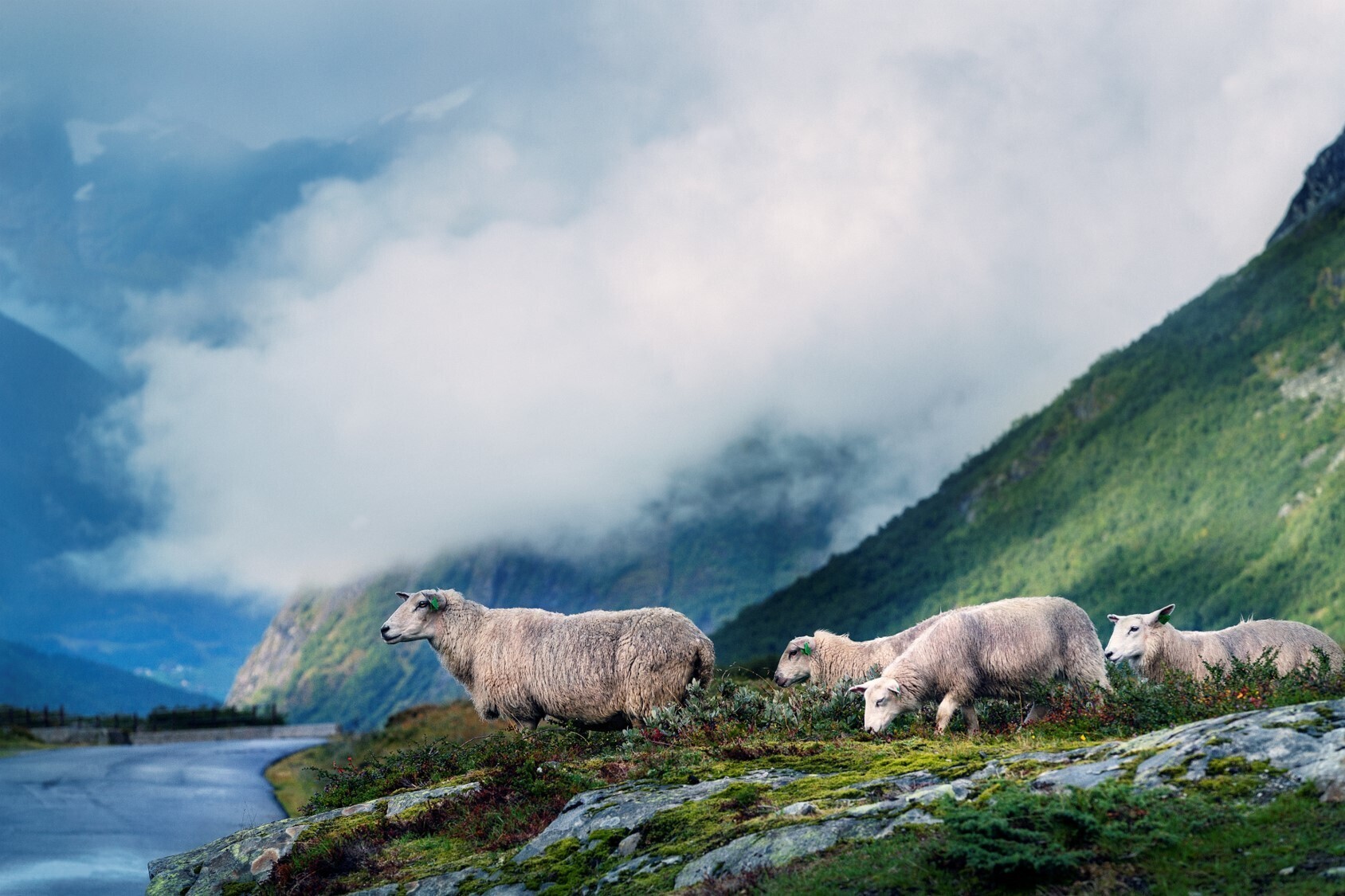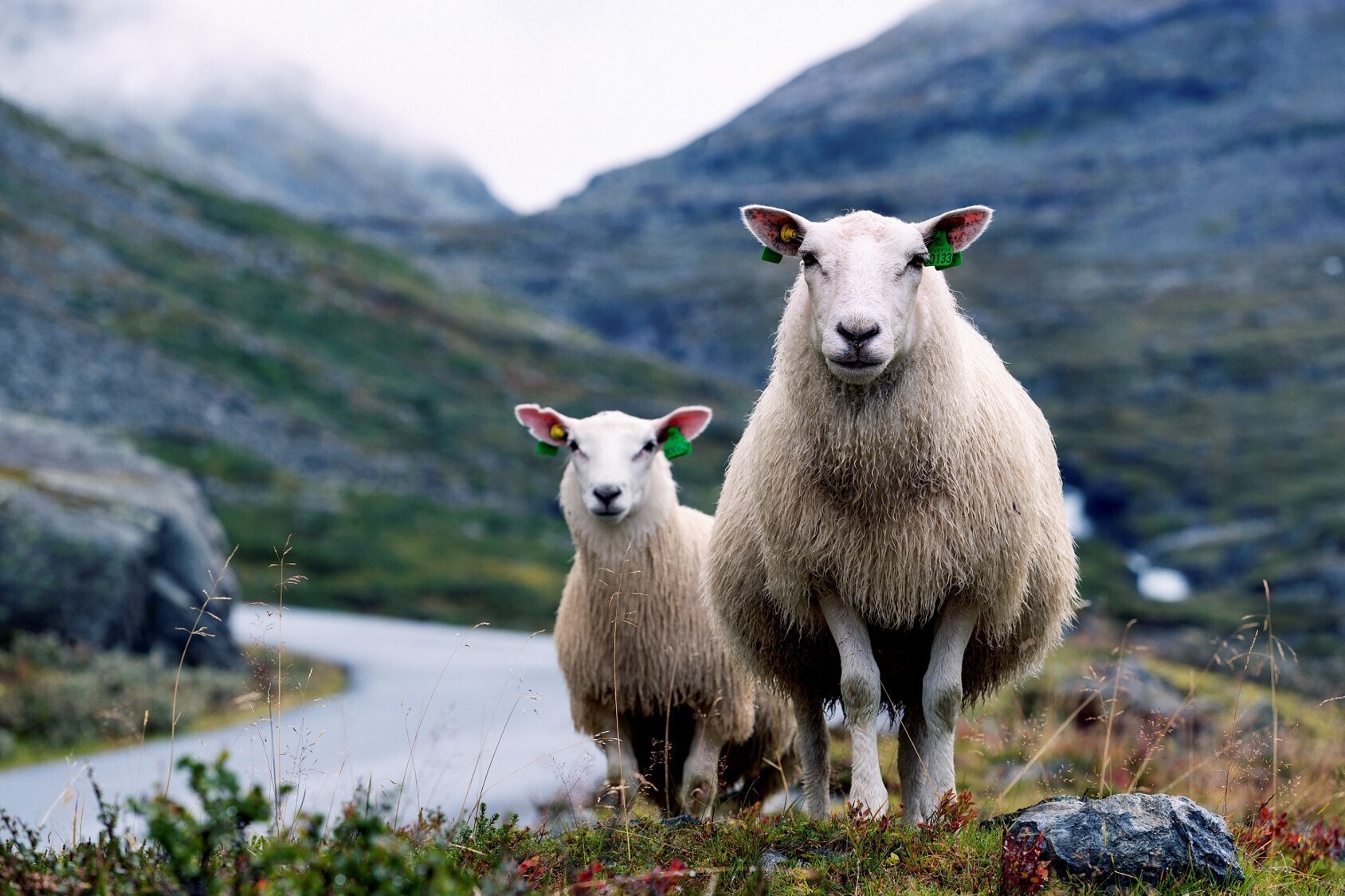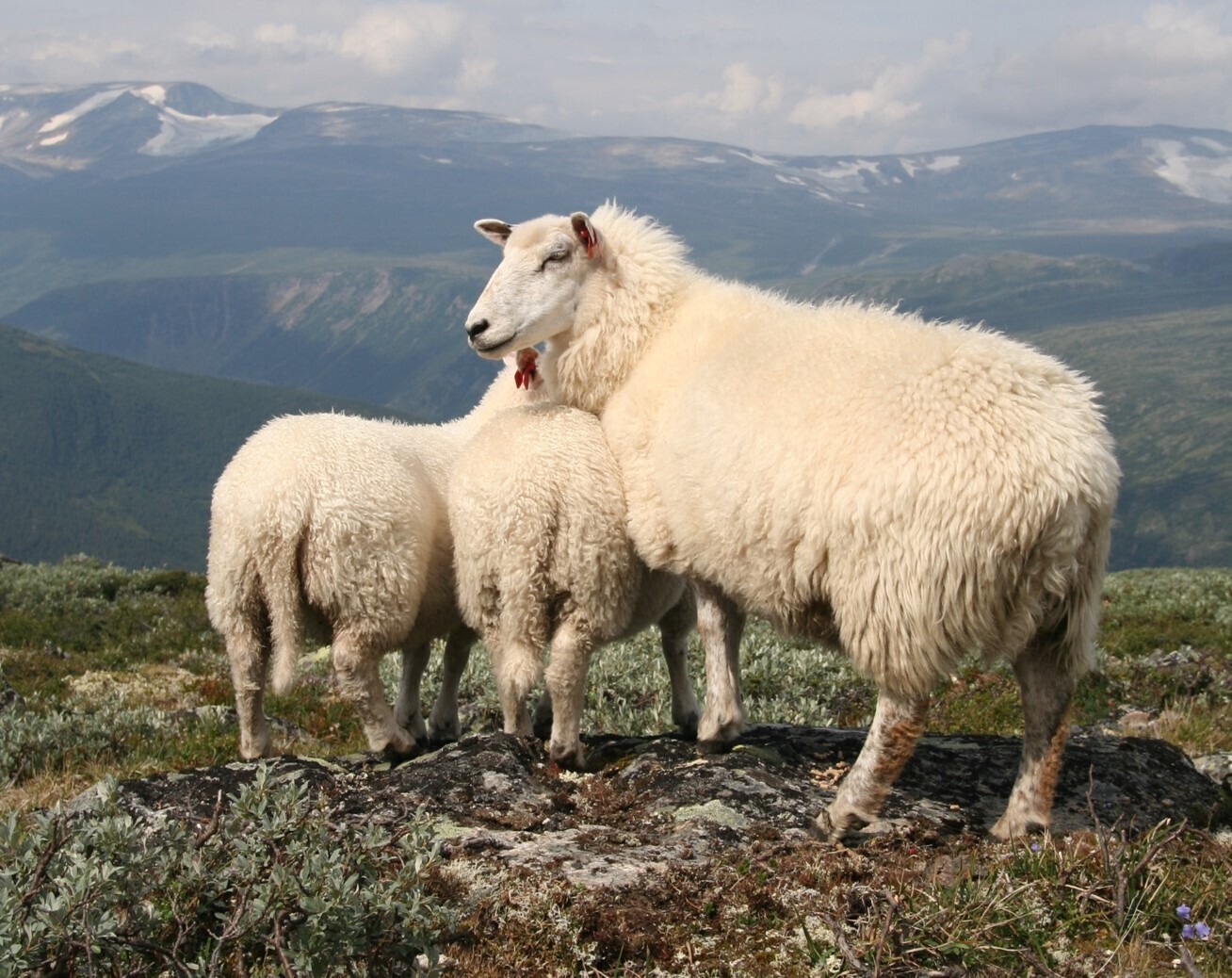Norwegian wool - a long history with a bright future
Photo: Sune Eriksen
Sheep are one of the oldest livestock animals in Norway. We have a long tradition of taking care of and using wool. Below, you can learn more about how wool is produced in Norway today.
Production adapted to natural conditions
It is estimated that the first sheep came to Norway more than 6,000 years ago. Sheep were some of the first animals to be kept as livestock. Sheep have been instrumental in shaping the cultural and natural landscape through grazing, haymaking, and use of wild uncultivated pastures in forests and mountains.
Norway is a land with large grass resources and only a few areas that are suitable for crop production – only 3% of Norway's land is arable. Those areas that are arable are limited with regards to crop production due to climate and topography challenges. That is why nearly 2/3 of the agricultural area in Norway comprises grassland. Ruminants have been, and still are, of high importance for self-sufficiency, as they can convert grass into human edible food products and plus-products such as wool. They are so efficient at this that they require very little feed concentrate.
Large feed resources are also available in the outfields as uncultivated semi-natural vegetation in the forests and mountains. In 2016, 2.4 million animals, of which 2.1 million sheep (85% of the total sheep population) were released in these outfields, mostly in the alpine zone.
Sheep farms in Norway
Today, Norway has more than 40,000 farms. You can find sheep on more than 14,000 of these farms. Sheep husbandry can be found in all provinces and in almost all municipalities. The typical way to hold sheep in Norway is to have many small farms, and 3 out of 4 farms have fewer than 100 adult sheep.
A typical year for a sheep farmer
Farmers typically see the start of the "sheep year" as sometime in the autumn, when the sheep come home from grazing in the mountain and forest areas. This is the moment when farmers decide which animals will be sent for slaughter, and which animals will be kept for breeding for the next year's production.
Most farmers breed their ewes in December, which means the lambs are born in April or May. Lambing is a very intense and demanding period, but also an enjoyable and rewarding time with so much new life. Each newly born lamb is registered with its own individual registration number. This number follows the animal throughout its entire life. After lambing has finished, the lambs and ewes go outside to graze on the farm's cultivated pasture.
When the snow on the mountain starts to melt, and the new grass starts to germinate and grow at a good pace, this means it is time for the sheep to go out into the mountains and forests. Up in the mountains, the sheep will roam around freely in the wild, along the edge of the melting snow and eat a nutritious diet of herbs, grass, heather, and bushes, and drink naturally pure clean mountain water.
However, the sheep are not without oversight during their time in the mountains. Farmers organize themselves in grazing groups, and take responsibility for supervising the sheep in the grazing area at least once a week. The first sheep are guided back down from the mountain at the end of August, with some sheep staying up in the mountains until the end of September.


Sheep grazing in the mountain
Photo: Sune Eriksen
Sheep shearing
Most of the breeding stock is shorn twice per year, once in the autumn when the sheep are being brought inside before the winter starts, and once in winter or early spring, in good time before lambing starts. We therefore have autumn wool and spring wool. Sheep from the traditional old Norwegian breed (villsau) go outside the whole year, and are therefore only shorn in June, after lambing.
Shearing of the breeding stock happens on the farms. Some sheep farmers shear the animals themselves, but most farmers hire a professional sheep shearer, for example through Nortura's shearing team. After clipping, the wool is sorted and packed in paper bags. Fleeces are packed one by one, with a sheet of paper of sorts between each fleece. Other wool from the underside, thighs, and tail is packed in separate bags. Finally, the sorted wool is kept at the farm until it is collected.
Wool collection
Norilia works together with the local chapters of Norwegian Sheep and Goat (NSG) in order to collect the wool from the farms. NSG has several local chapters around the country. This enables the collection of wool of any type from any place. Norilia pays the local chapters 0.85 Norwegian kroner per kilogram of wool for their help in collecting the wool, which helps finance the local chapters' activities. Collection happens once or twice per year.







 Sheep grazing in the mountain
Sheep grazing in the mountain




